As the summer comes to a close, students, families, teachers, and schools are gearing up for the new academic year. The start of a school year brings reflection, goal setting, and the opportunity for change. In this spirit, we asked Oregonians for their priorities for the state’s educational system.
These findings come from the August fielding of our DHM Panel. The survey was conducted from July 17 to 25, 2019, and surveyed 574 Oregonians. The results were weighted by age, gender, area of the state, political party, and level of education to ensure a representative sample of Oregon residents. The margin of error for this survey ranges from ±2.5% to ±4.1%.
Oregonians prioritize real-world skills and career readiness over testing.
A strong majority of Oregonians say that real-world and critical thinking skills should be top priorities for Oregon’s K–12 public education system. Nearly half prioritize career readiness and only 16% prioritize college preparedness. Preparing students for standardized testing is by far the lowest priority among those tested.
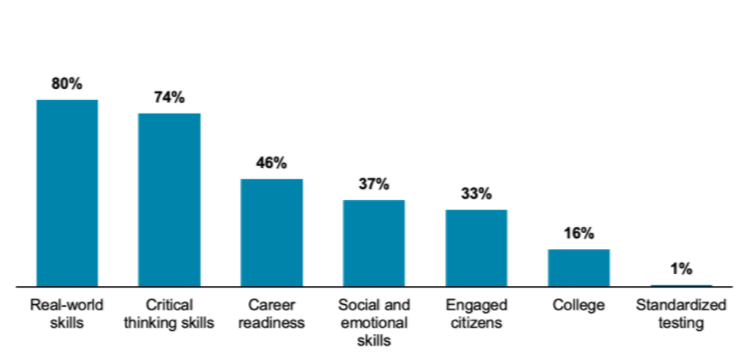
Party affiliation plays a role in the priorities that Oregonians set for Oregon’s schools. For example, Republicans (63%) are more likely to say that preparing students for careers should be a priority than Democrats (39%).
Oregonians are split on the existence of the achievement gap and favor more traditional solutions.
41% of Oregonians say that all students have the same opportunities for success regardless of race, gender, socioeconomic status, sexual orientation, or disability while 50% say that students have different opportunities for success based on these categories.
Party affiliation plays a significant role in the way that Oregonians’ view student opportunity for success. Republicans (83%) are more likely to say that students have the same opportunities for success than Democrats (17%). Meanwhile, Democrats (70%) are more likely to say that students have different opportunities for success than Republicans (15%).
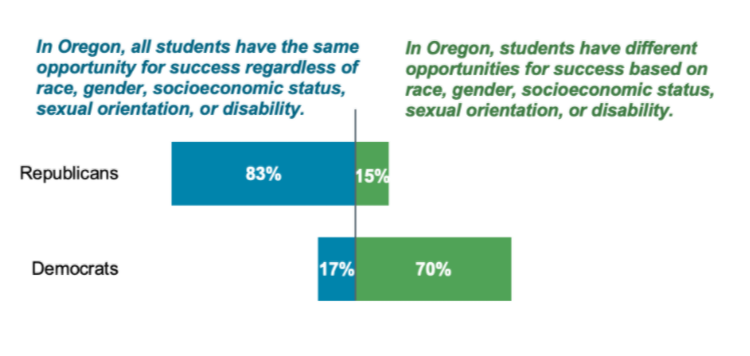
When rating the importance of strategies aimed at closing the achievement gap, a majority of Oregonians (60%) say that it is “very important” to implement classroom behavior management strategies that hold students accountable. This is followed by English-language instruction (52%) and holding families accountable for student absenteeism and performance (49%) as the next highest rated strategies. Oregonians gave lower ratings of importance to culturally responsive strategies such as teaching to diverse learning styles (40%) and outreach to students’ families (28%).
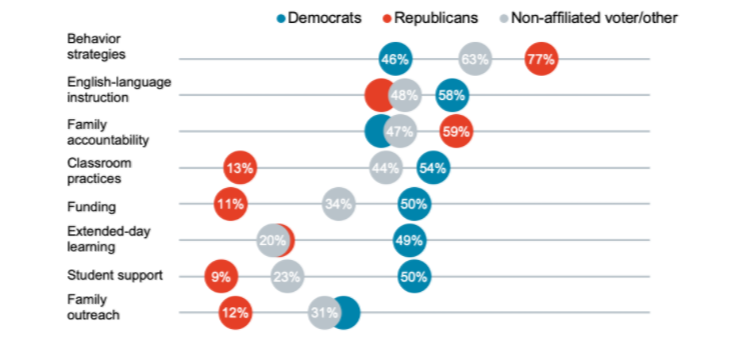
Party affiliation is also a factor in how Oregonians view the importance of strategies to close the achievement gap. While party does not play a significant role in support for English-language instruction and family accountability, it is a driving factor in support for classroom behavior strategies. Republicans (77%) are more likely to say classroom behavior strategies are very important to close the achievement gap than Democrats (46%). Aside from the top three strategies, all other strategies are much more favored by Democrats than Republicans.
Oregonians favor additional compensation and support for teachers.
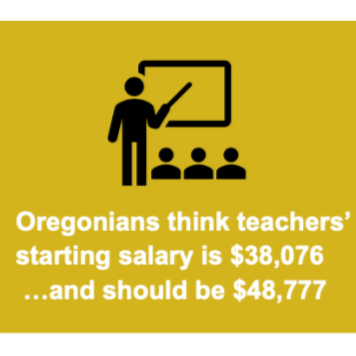
Oregonians guessed that the average starting salary for a teacher with a bachelor’s degree is $38,076, which was slightly higher than the actual average for the 2018–19 school year ($37,698). (http://www.osba.org/Resources/Article/Employee_Management/Salary_Survey_Book.aspx) Oregonians think that teachers should be paid 25% more, an average starting salary of $48,777.
The top three strategies that Oregonians say should be a priority for addressing the current teacher shortage are offering scholarships and student loan forgiveness to encourage careers in education (56%), providing mentorship to new teachers (48%), and offering competitive compensation (48%).
Here too, party affiliation impacts the strategies that Oregonians favor. Democrats (68%) and Independents (65%) are more likely to favor offering scholarships and student loan forgiveness than Republicans (27%). Democrats (59%) are also more likely than Republicans (28%) to favor offering competitive compensation to attract and retain teachers.
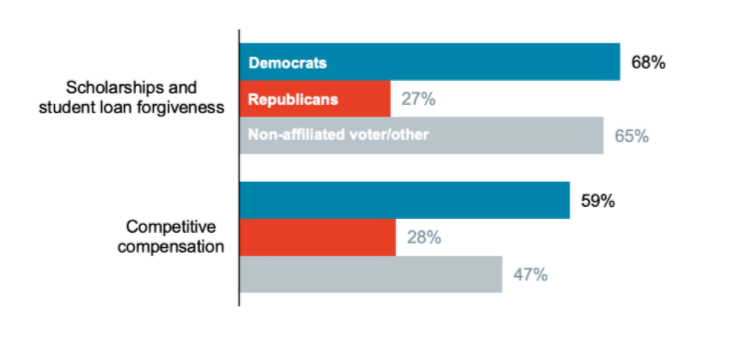
Oregonians question the value of college, are concerned about student loans, and want alternatives to traditional higher education.
In light of the continual increase in college tuition, 70% of Oregonians say that a college degree is less valuable today than it was 50 years ago. Age plays a significant role in how Oregonians view the value of a college degree, as younger Oregonians (76%) are more likely to say that a college degree is less valuable today than Oregonians who are 65 years old and over (42%).
74% of Oregonians are concerned about student loan debt in America. Party affiliation and education level plays a role in concern about student loan debt. Democrats (89%) are more likely to say they are concerned about student loan debt than Republicans (64%). Oregonians with undergraduate degrees or more (80%) and those with some college or a 2-year degree (81%) are more likely to report concern over student loan debt than Oregonians with high school diplomas or less (38%).
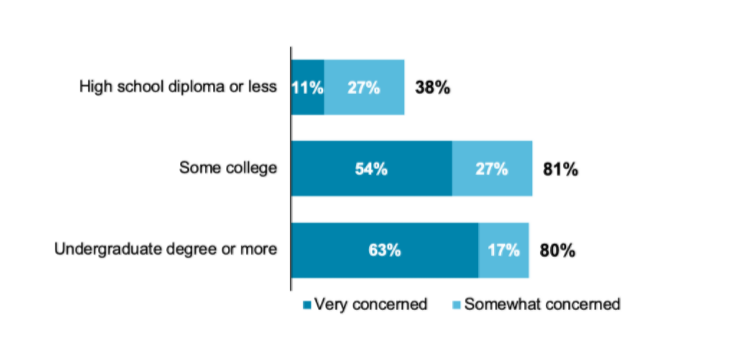
When rating policy proposals to address student loan debt on the national level, Oregonians largely support expanding opportunities for alternative education paths (68%). This is followed by support for lowering caps on interest rates for student loans (44%) and providing universal free public college (38%).
